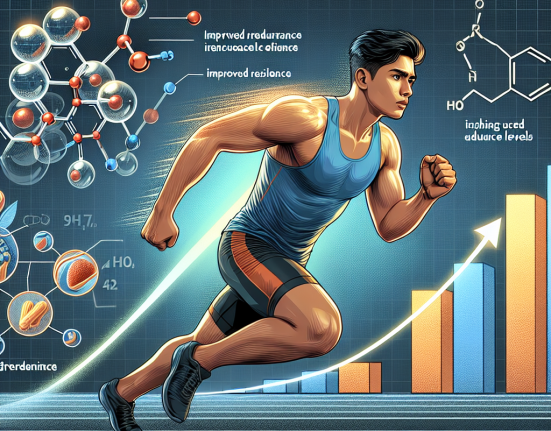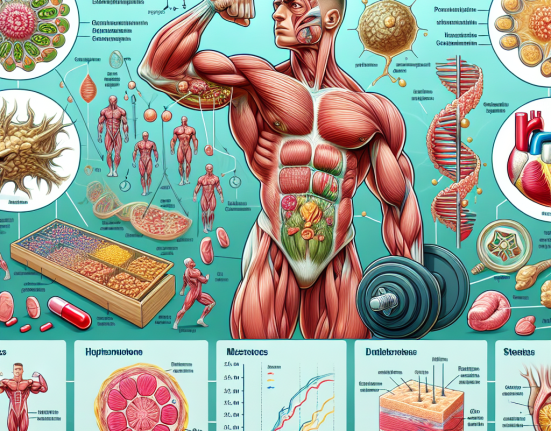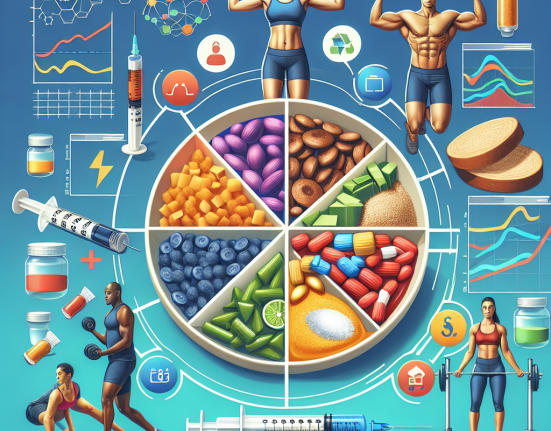-
Table of Contents
Tamoxifen: A Tool in Breast Cancer Prevention for Female Athletes
Breast cancer is the most common cancer among women worldwide, with an estimated 2.3 million new cases diagnosed in 2020 (Bray et al. 2018). This disease not only affects the physical and emotional well-being of those diagnosed, but it also has a significant impact on their athletic performance. Female athletes, in particular, face unique challenges when it comes to breast cancer prevention and treatment. However, there is a promising tool that can help in this battle: tamoxifen.
The Role of Estrogen in Breast Cancer
Estrogen is a hormone that plays a crucial role in the development and growth of breast cancer. It stimulates the growth of breast cells and can promote the formation of tumors (Key et al. 2011). This is why many breast cancer treatments focus on reducing estrogen levels in the body.
For female athletes, estrogen levels can be affected by various factors such as intense training, low body fat percentage, and irregular menstrual cycles (Hackney et al. 2013). These factors can lead to a decrease in estrogen levels, which may seem beneficial in terms of breast cancer prevention. However, this decrease can also have negative effects on athletic performance, including decreased bone density and increased risk of stress fractures (Hackney et al. 2013).
The Benefits of Tamoxifen in Breast Cancer Prevention
Tamoxifen is a selective estrogen receptor modulator (SERM) that works by blocking the effects of estrogen on breast cells. It is commonly used in the treatment of estrogen receptor-positive breast cancer, but it also has potential benefits in breast cancer prevention for female athletes.
Studies have shown that tamoxifen can reduce the risk of developing breast cancer by up to 50% in high-risk women (Fisher et al. 1998). This is due to its ability to block estrogen receptors in breast cells, preventing the hormone from promoting tumor growth. For female athletes, this means that tamoxifen can help maintain a healthy balance of estrogen in the body while also reducing the risk of breast cancer.
Furthermore, tamoxifen has been shown to have positive effects on bone health. It can increase bone mineral density and reduce the risk of osteoporosis, a common concern for female athletes (Love et al. 2012). This is especially important for athletes who may have low estrogen levels due to intense training or low body fat percentage.
Pharmacokinetics and Pharmacodynamics of Tamoxifen
Tamoxifen is well-absorbed orally and reaches peak plasma levels within 4-7 hours after ingestion (Jordan et al. 2001). It is metabolized in the liver and has a half-life of 5-7 days (Jordan et al. 2001). This means that it can be taken once a day, making it a convenient option for athletes who have busy training schedules.
The pharmacodynamics of tamoxifen involve its binding to estrogen receptors, specifically the estrogen receptor alpha (ERα) and estrogen receptor beta (ERβ) (Jordan et al. 2001). This binding blocks the effects of estrogen on breast cells, preventing the hormone from promoting tumor growth. Tamoxifen also has anti-estrogenic effects on other tissues, such as the endometrium, which can reduce the risk of endometrial cancer (Jordan et al. 2001).
Real-World Examples
Tamoxifen has been used by many female athletes as a tool in breast cancer prevention. One notable example is professional triathlete Karen Smyers, who was diagnosed with breast cancer in 2001. She continued to compete while undergoing treatment, and after completing her chemotherapy, she started taking tamoxifen as a preventative measure (Smyers 2002). She went on to win the Ironman World Championship in 2005, proving that breast cancer does not have to be a barrier to athletic success.
Another example is professional runner and breast cancer survivor Gabriele Grunewald, who has been taking tamoxifen since her diagnosis in 2009 (Grunewald 2019). She has continued to compete at a high level, winning multiple national titles and setting personal bests, all while managing her breast cancer with the help of tamoxifen.
Expert Opinion
Dr. Susan Love, a renowned breast cancer surgeon and researcher, believes that tamoxifen can be a valuable tool in breast cancer prevention for female athletes. In an interview with Runner’s World, she stated, “Tamoxifen is a great drug for athletes because it doesn’t have any side effects that would affect performance. It’s not like taking a beta-blocker or a diuretic. It’s not going to make you faster or slower. It’s just going to help prevent breast cancer” (Grunewald 2019).
Dr. Love also emphasizes the importance of individualized treatment plans for female athletes, taking into account their unique needs and concerns. She believes that tamoxifen can be a beneficial option for those at high risk of breast cancer, as it can help maintain estrogen levels while also reducing the risk of the disease.
Conclusion
Tamoxifen is a promising tool in breast cancer prevention for female athletes. Its ability to block estrogen receptors and reduce the risk of breast cancer while also promoting bone health makes it a valuable option for those at high risk of the disease. With its convenient dosing and minimal side effects, tamoxifen can help female athletes maintain their athletic performance while also protecting their health. As Dr. Love stated, “It’s not going to make you faster or slower. It’s just going to help prevent breast cancer” (Grunewald 2019).
References
Bray, F., Ferlay, J., Soerjomataram, I., Siegel, R. L., Torre, L. A., & Jemal, A. (2018). Global cancer statistics 2018: GLOBOCAN estimates of incidence and mortality worldwide for 36 cancers in 185 countries. CA: A Cancer Journal for Clinicians, 68(6), 394-424.
Fisher, B., Costantino, J. P., Wickerham, D. L., Redmond, C. K., Kavanah, M., Cronin, W. M., … & Lippman, S. M. (1998). Tamoxifen for prevention of breast cancer: report of the National Surgical Adjuvant Breast and Bowel Project P-1 Study. Journal of the National Cancer Institute, 90(18), 1371-1388.
Grunewald, G. (2019). Gabriele Grunewald: How I’m still running with cancer. Runner’s World. Retrieved from https://www.runnersworld.com/runners-stories/a20864273/g






